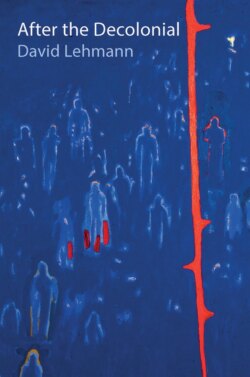Читать книгу After the Decolonial - David Lehmann - Страница 14
Popular religion, culture and ethnicity
ОглавлениеTo begin to see beyond the decolonial, I explore the conceptualization and application of everyday words like indio or mestizo and the frontiers they convey in the interpretation of the region’s acute inequality. This means taking account of blurred social and racial frontiers and the frequent ambiguity of relationships across those frontiers, and avoiding assumptions about the homogeneity and uniformity of ethno-linguistic and racial populations and frontiers. I then move on to the subject of popular culture, which in Latin American is a crossroads, a meeting point and sometimes a flashpoint for socially stratified and racially differentiated streams, to show how the interpretation of cultural practices in terms of race, ethnicity, gender and religion can both take account of intersectionality and avoid binarization.
I begin with the supernatural (religion) and the pervasive presence of mixture and of borrowing, both self-conscious (‘reflexive’) and filtered through decades and centuries of the collective unconscious. Decolonial writing on indigenous knowledge or science misses out on the place of ritual and the difference between rituals of healing and the efficacy of healing. It tends to assimilate the efficacy of folk remedies and folk wisdom (for example, as applied to agricultural practices) to scientific knowledge: because it is the fruit of generations of experimentation and observation in societies based on agriculture and animal husbandry, such wisdom may well provide reliable guidance for growing plants, raising animals and treating minor ailments, but as knowledge it should not be described as scientific in the usual (Anglo-Saxon) sense1 because it is not conducted in the impersonal institutions of science. Conversely, every day there is abundant evidence of indigenous support for modern science: indigenous organizations throughout the Amazon and the Andes are constantly campaigning on climate change which is devastating their livelihoods, and during the current pandemic, when Amazon Indian groups are suffering from a higher death rate than the population as a whole, leaders have told that, although people have tried their folk medicine, they are painfully and tragically aware that they need the almost inaccessible resources of modern medicine.
The decolonial concept of indigeneity sets aside the multi-directional influences whereby, in the field of religion, popular Catholicism incorporates indigenous ritual and ceremony and indigenous ceremonies incorporate Catholic practices shaped by centuries of mixture. Outsiders are alert to the colonial or indigenous origins of the practices and symbols they observe, but those who perform them – whether they think of themselves as indios, cholos or mestizos2 – seem uninterested in such questions of authenticity. The discussion becomes even more convoluted when ethno-historians tell us that urban intellectuals in Bolivia are misinterpreting indigenous concepts like the now globalized Pachamama, or when we learn that indigenous healers in Chile, practising out of dedicated spaces in public hospitals and travelling the globe to administer their herbal remedies, are sought out by people who make no claim to an indigenous heritage at all.3
As with religion, so with race and ethnicity. The field is riven with markers of inequality, yet the frontiers are porous. Using a Bolivian case, I describe the perpetual exchanges of ethnic symbols and markers and the ways in which they serve nevertheless to solidify social inequalities and racial exclusion, something that cannot be said of art, music, dance and civic commemorations. Evo Morales solved the problem by inventing a pan-ethnic indigenism which gathered all the country’s indigenous peoples, indeed the entire population (except the lowland rancher elite) under its wing. Like the country’s nationalist 1952 revolution, which gave birth to a mestizo middle class, the new ideology disregarded the internal inequalities and fractures of the coalition, especially the lowland Amazonian Indians, and oversaw the continued development of a burguesía criolla – imperfectly translated as a ‘Creole bourgeoisie’.4 Morales made his political career as leader of the tightly organized and hierarchical coca growers’ association (the cocaleros) fighting for freedom to grow their crops. The coca leaf was a useful cultural symbol – the first of many deployed by Evo – but their demands were not cultural – they wanted freedom to grow and sell their crop and the cancellation of the government’s agreement with the United States to destroy their plantations.
Exchanges of ritual practices and ethnic markers across boundaries that have evolved over centuries can be conceptualized as a dialectic of the erudite, or elite, and the popular, in which the awareness and definition of what is one and what is the other are subjective and fluctuating. This formula sets aside issues of ethnic authenticity and heritage and subsumes fields such as religion and civic celebrations into a broader framework, which is provided by Nestor García Canclini. Canclini’s writing revolves around hybridity, stimulated by a Mexican art world at once conscious of the country’s popular heritage and attuned to global trends and fashions. The dialectic is compounded by agonizing over the artistic status of folk art and crafts such as the artefacts one buys in provincial markets, but then migrates into postmodern register when he considers the ‘kitsch’ architecture in the Americanized cities of the country’s northern border. The dominant theme is of porous frontiers.
